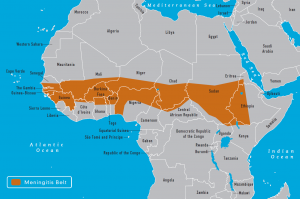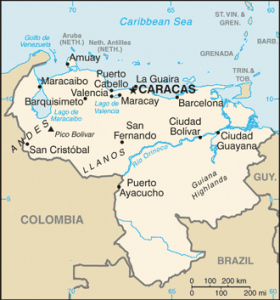I have not done a annual “Top 10” list of the major infectious disease news stories since 2013 and this is the first on this website.
The number of important and newsworthy events of 2017 are numerous and to narrow it down to 10 is a challenge.
Some may have different ideas on what constitutes the Top 10 and my list is based on covering infectious disease news since 2009.
The Top 10 Infectious Disease and Outbreak News stories of 2013
Anyway, here it is…
10. Getting ever closer to eradication
Smallpox is the first and only human infectious disease to be eradicated. Thanks to a campaign of universal vaccination the last naturally occurring case of smallpox was in October 1977 in Somalia. Two years later the World Health Organization (WHO) certified it as eradicated. This was sanctioned by the World Health Assembly (WHA) on May 1980.

Image/Video Screen Shot
There are two other infectious diseases that are getting so closer to this massive achievement and the end is in sight–polio and guinea worm disease.
Polio cases have decreased by over 99% since 1988, from an estimated 350,000 cases then, to 37 reported cases in 2016. In 2017, that number (of WPV-1 cases) has dropped to 19 (7 in Pakistan and 12 in Afghanistan) through Dec. 19 thanks to vaccinations.
Guinea Worm Disease is on an equally miraculous track as it gets closer to eradication. In 1986, there were an estimated 3.5 million cases in 21 countries in Africa and Asia. Today, that number has been reduced by more than 99.99 percent.
Through Oct. 31, 26 cases have been reported from two countries (Chad- 14 and Ethiopia- 12). No vaccine or medical treatment exists for Guinea worm infection in humans. Instead, the ancient disease is being wiped out mainly through community-based interventions to educate and change behavior, such as teaching people to filter all drinking water and preventing contamination by keeping patients from entering water sources.

9. Measles in Europe
This vaccine preventable disease has really reared it’s ugly head in Europe starting in late 2016 and through all of 2017.
Some 14,000 cases have been reported on the continent with Romania, Italy and Germany being the most affected. Some 87 percent of those infected were unvaccinated.
LISTEN: Anti-vaccine arguments rebutted
8. Lyme disease developments
There was some important developments concerning the most common vector-borne disease in the US in 2017.
There has been more political will to look into this tick borne disease as evidence this month by the first meeting of the Tick-Borne Disease Working Group.
In addition, Valneva was granted FDA Fast Track designation for their Lyme disease vaccine candidate and important research was published that found that the Lyme bacteria, Borrelia burgdorferi survive a 28-day course of antibiotics when treated months after infection. In addition, the study also measured the antibody immune response to the bacteria both pre- and post- treatment, as this is how current diagnostics typically evaluate Lyme disease in humans.
This was just a portion of the happenings in the world of Lyme disease.
LISTEN: Lyme disease: New research on Borrelia burgdorferi persistence
7. The Dengvaxia debacle
Since the announcement in late 2015 of Mexico approving the dengue vaccine, Dengvaxia by Sanofi Pasteur, about a dozen or more countries approved the “milestone” vaccine.
The Philippines, the first Asian country to approve the vaccine, rolled it out in force in 2016. From that time until recently, some 730,000 children were vaccinated.
Then came the announcement from Sanofi Pasteur on Nov. 29 that revealed that there is an increased risk of severe dengue and hospitalization several years after vaccination among people in all age groups who had not been exposed to dengue prior to vaccination.
This prompted the Philippines to put the dengue vaccination program on hold. Since then there has been a Task Force created and much finger pointing at who’s at fault.

6. African meningitis belt
Thousands of meningococcal meningitis C cases were reported in the African meningitis belt with Nigeria, Niger, Burkina Faso and Mali seeing many of these cases. Nigeria saw more than 1100 fatalities.
Just last week, the World Health Organization warned of an upcoming Men C epidemic in 2018; however, to make matters worse, vaccine shortages have been noted.
5. Hepatitis A
Outbreaks in Europe and the US have been reported among men who have sex with men (MSM) and homeless people. Vaccine shortages have been reported in this case also.
4. Running out of antibiotics
A WHO report in September shook people up a bit with some reality of a real crisis looming. The report, Antibacterial agents in clinical development – an analysis of the antibacterial clinical development pipeline, including tuberculosis showed a serious lack of new antibiotics under development to combat the growing threat of antimicrobial resistance.
Officials note that most of the drugs currently in the clinical pipeline are modifications of existing classes of antibiotics and are only short-term solutions. The report found very few potential treatment options for those antibiotic-resistant infections identified by WHO as posing the greatest threat to health, including drug-resistant tuberculosis which kills around 250 000 people each year.
The report identifies 51 new antibiotics and biologicals in clinical development to treat priority antibiotic-resistant pathogens; however, only 8 are classed by WHO as innovative treatments that will add value to the current antibiotic treatment arsenal.

3. Venezuela
Venezuela is in turmoil no matter what angle you look at it. Infectious diseases is one angle.
In 2016, Venezuela saw the most malaria cases since 1971 and that 30 per cent more children died before their first birthday and 64 per cent more women died during pregnancy or within 42 days after giving birth in 2016 compared to 2015.
In 2017, we saw a major uptick in measles and the very dangerous vaccine preventable disease, diphtheria.
Things are not looking good and I don’t expect much good news in 2018.
2. Madgascar plague
Plague in Madagascar is not unusual and hundreds of cases, primarily bubonic plague is reported annually.
However, an unprecedented outbreak of plague in Madagascar, which started on 1 August 2017 resulted in some 2,500 cases and more than 200 deaths.
Nearly eight out of 10 cases were the more dangerous and person-to-person transmissible pneumonic, or pulmonary plague.
In early December, WHO reported the outbreak had been contained.
LISTEN: Pandemic vs epidemic: What’s the difference and why does it matter?
1. The Yemen crisis
Years of war, Saudi-led airstrikes and blockades has led to a huge humanitarian crisis in Yemen, the poorest country in the Middle East.
Since Apr. 27, 1,013,260 cholera cases have been reported, including 2233 deaths. The outbreak has quickly surpassed Haiti as the biggest since modern records began in 1949.
Diphtheria has seen a resurgence with more than 300 cases and 35 deaths being reported in the past three months.
According to the 2018 Humanitarian Needs Overview, 16.4 million people in 215 districts across Yemen lack adequate access to health care – 9.3 million of whom are in acute need. This presents a drastic increase of 79.3% since late 2014.
Related:
- Yemen cholera and diphtheria: ‘The ongoing war and blockade are sending Yemen’s health system decades back in time’
- Madagascar MOH officially announces the containment of the acute urban pneumonic plague outbreak
- Venezuela’s health crisis: A discussion with Dr. Leopoldo Villegas



3 thoughts on “10 Most Important Infectious Disease Stories of 2017: Outbreak News Today”